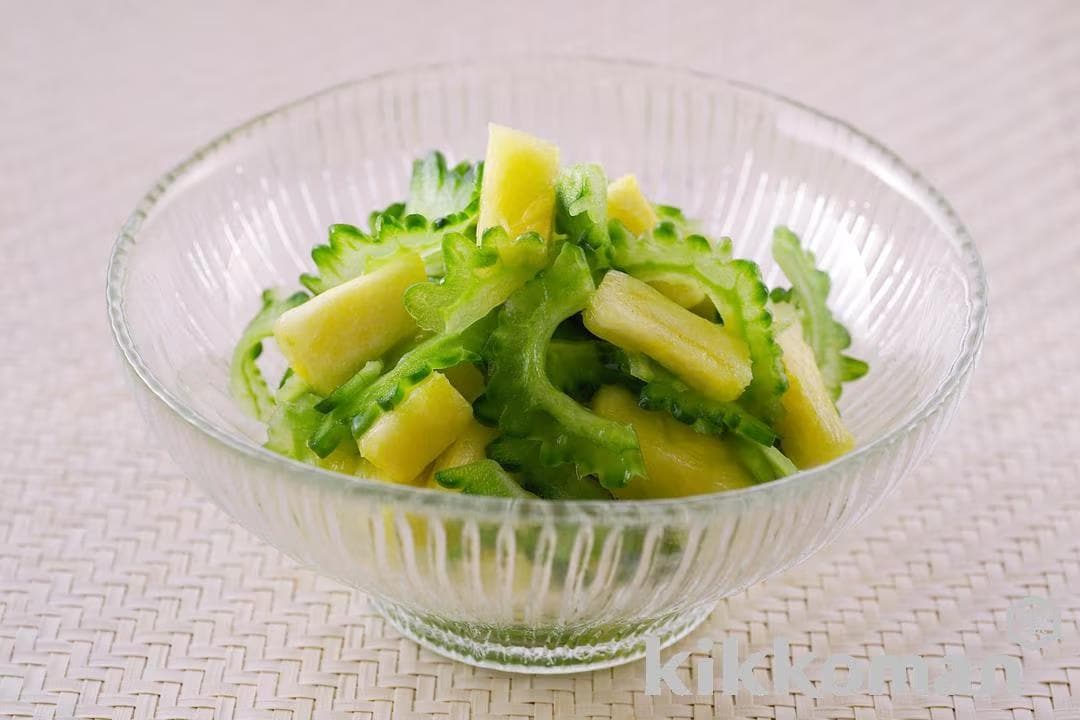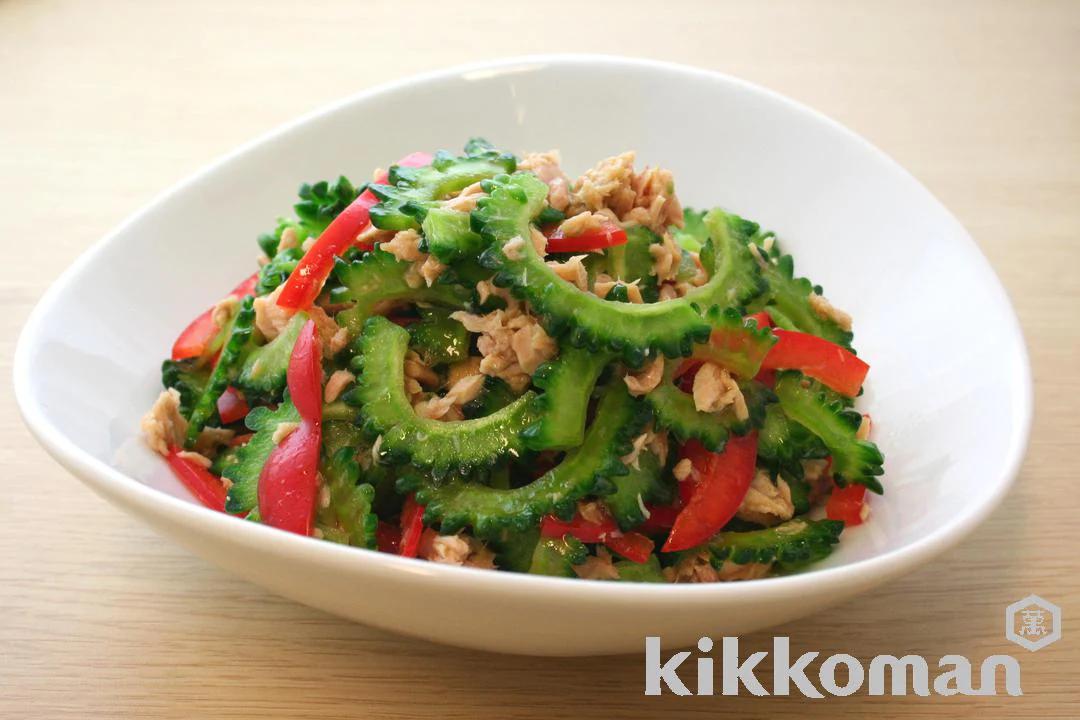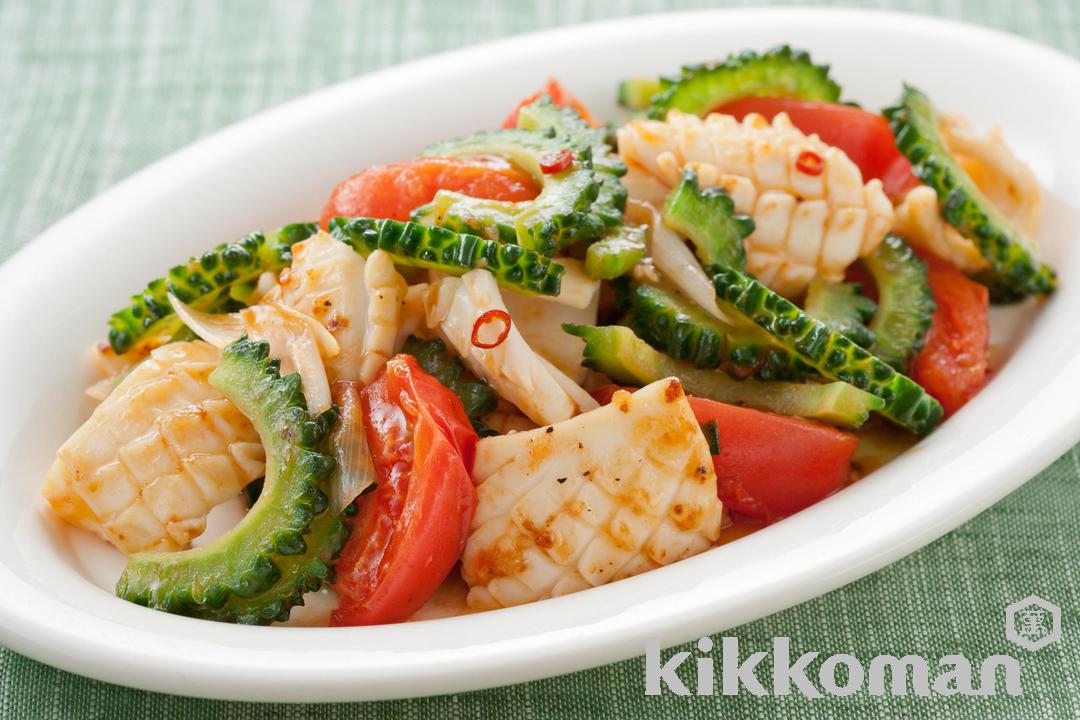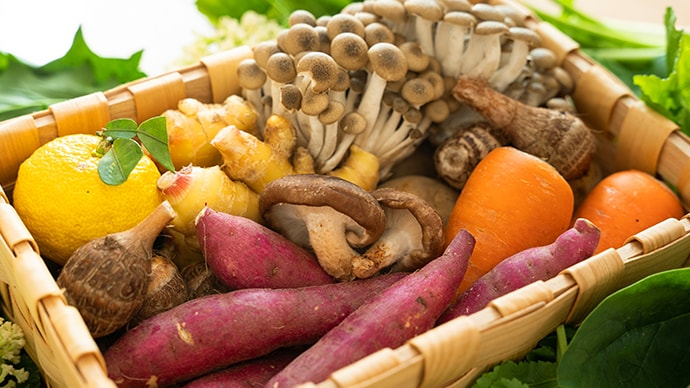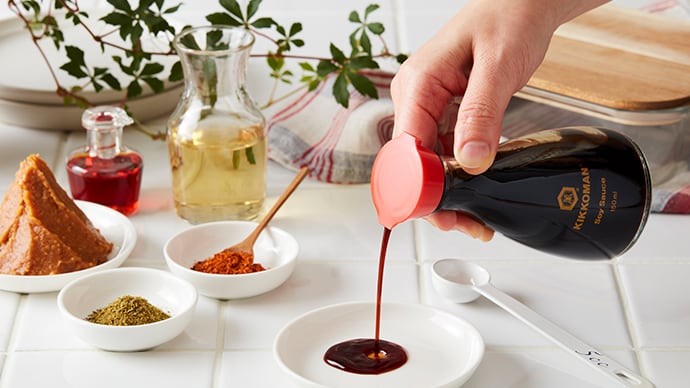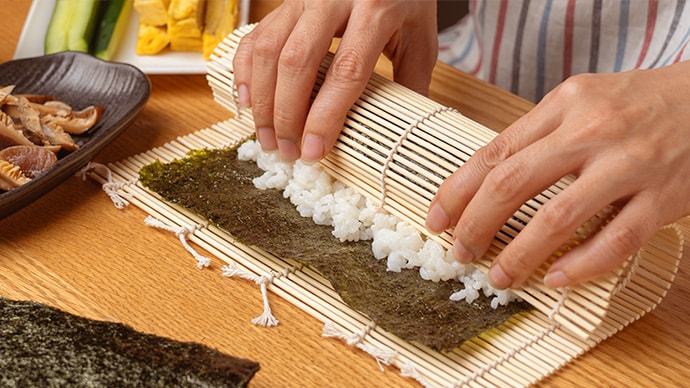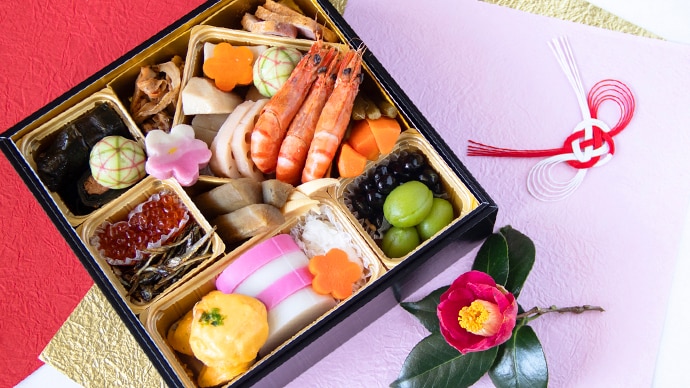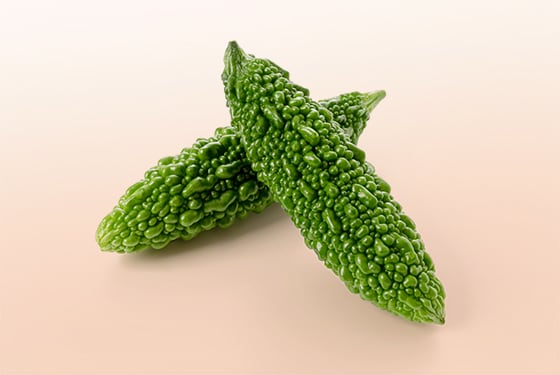
A vegetable with a strong bitter taste, often used in Okinawan cuisine in Japan
What is goya?
Goya / Bitter melon (ゴーヤ in Japanese) is a vegetable with a rough green surface and a strong bitter taste. It has been cultivated in Okinawa for a long time in Japan. Indeed, the name "goya" is an Okinawan word meaning "bitter melon." The pulp and seeds have a strong bitter taste, so they are removed with a spoon before cooking. It is used in stir-fries, boiled vegetables, salads, tempura, and tsukudani (preserved food simmered in soy sauce and mirin). Dark-colored goya has a strong bitter taste, so it is suitable for stir-fries and tsukudani, while light-colored goya has a weak bitter taste and is suitable for boiled vegetables and salads.
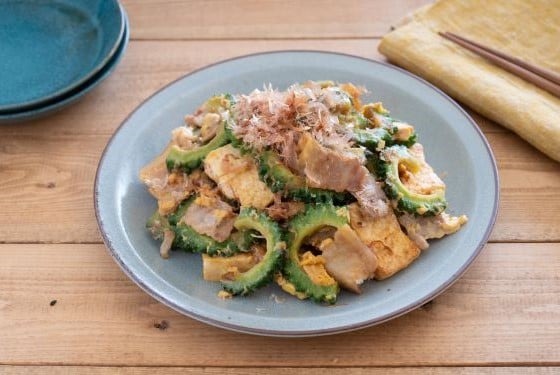
Nutrition facts
Goya is characterized by its high vitamin C content. The vitamin C in goya is heat-resistant, and as a result its nutritional value is not easily lost when cooked. Vitamin C is essential for the production of collagen, a connective protein in bones and tendons, so it is good to consume alongside ingredients with protein. Goya also contains a lot of potassium, which is expected to have the effect of helping excrete excess salt from the body and regulate blood pressure. It is also rich in beta-carotene, folic acid, and dietary fiber.
Goya contains a bitter component called momordicin, which stimulates the stomach and intestines, increasing appetite and aiding digestion. It is also being studied for its effect of suppressing blood sugar levels. Both vitamin C and momordicin are water-soluble, so avoid soaking goya in water for long periods of time. Frying it in oil will also help prevent its nutrients from being lost.
Storage to prevent food loss
Goya can be stored at room temperature for about 2 days. If the goya is not to be consumed right away, cut it in half lengthwise, remove the pith with a spoon, cover the cut end with kitchen paper, place in a plastic bag and put in the refrigerator for about 1 week. After removing the pith, cut it into easy-to-use pieces, soak in water, place in a plastic bag and freeze for about 1 month.
Trivia
If you want to reduce the bitterness of goya, remove the pulp and cut it thinly, sprinkle salt on it, mix, leave for about 30 minutes and then rinse the salt off. If you want to reduce the bitterness even more, pour boiling water over the goya or boil it in boiling water for a few minutes before cooking.
Cooking Basics

Cut the bitter melon in half lengthwise and then scrape out the seeds and cotton with a spoon.

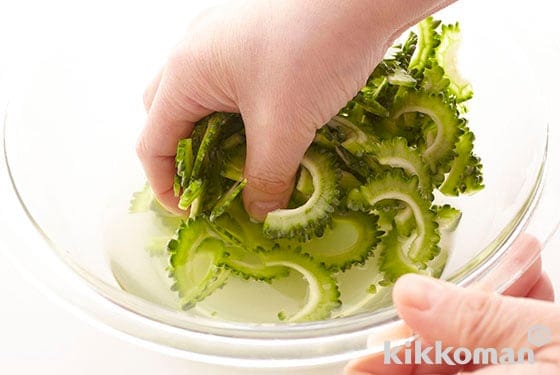
Thinly slice up the bitter melon and then place into an approximately 5% salt/water solution. Gently stir and then set aside for about 10 minutes. This method is preferred to massaging salt into sliced bitter melon since the crunchiness will be preserved and a delicate salty taste will be added. Pat dry before using.
Related Recipes
10min
322kcal
787mg
10min
31kcal
118mg
15min
46kcal
400mg
20min
177kcal
800mg




